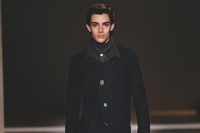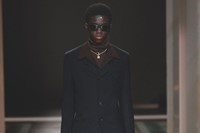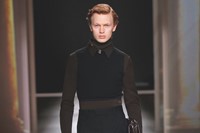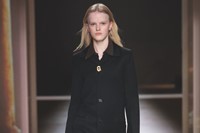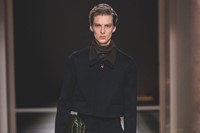The award-winning designer rose to expectations with an Autumn/Winter 2020 collection that moved away from toughness and towards comfort and movement
A lot has been said of Daniel Lee’s history-making evening at last year’s Fashion Awards, which saw the British designer – who was installed as the creative director of Bottega Veneta just a year and a half prior – take home four accolades, including Designer of the Year and Brand of the Year, the evening’s top prize, for Bottega itself. It was a landslide, marking the most awards won by a single designer in the ceremony’s three decade-long history.
Which is to say, when it came to his Autumn/Winter 2020 show in Milan this weekend – his first collection since the awards – the pressure was well and truly on (“Breaking the Curse of the It Bag – Not to mention four fashion awards. Daniel Lee, the Bottega Veneta designer, has a lot to prove”, ran the head- and byline of Vanessa Friedman’s New York Times profile of the designer the day prior). But Lee – who has already entirely reconfigured the Italian house, and the women it attracts, against some odds – confounded doubts once again, presenting a sleek and instinctual ready-to-wear collection, his best yet.
It was also his most personal, Lee said backstage. As a teenager, the designer had been fascinated by dance; here, the fluidity of that medium became the collection’s central force. Left behind was that tough, sometimes rigid, feeling of earlier collections (boxy motocross leather jackets, clomping boots and the like), replaced with something altogether more sinuous: there were elongated overcoats and tailored blazers, narrow trousers, in stretch fabric, sliced into a flare at the ankle. Diaphanous knit dresses wrapped up around the neck like a halter, others came in a body-clinging rib (these buttoned down the front, and were worn open, cardigan-like, over other dresses). They suggested comfort and sensuality at once.
The idea of movement – key to the collection, Lee said – was suggested in the proliferance of tassels, which swung from fringed hems of dresses, and later long, ground-skimming shearling overcoats (interestingly, tassels and fringing were something of a Milanese trend, appearing at both Jil Sander and Prada too). More literally, a motif of leaping (or perhaps dancing) figures decorated crochet knitwear for women and men. Glittering pailettes, meanwhile – across draped dresses, which were given shape via a series of drawstring fastenings, or flared trousers – had a disco energy. “A rush of vitality and movement,” the notes described.
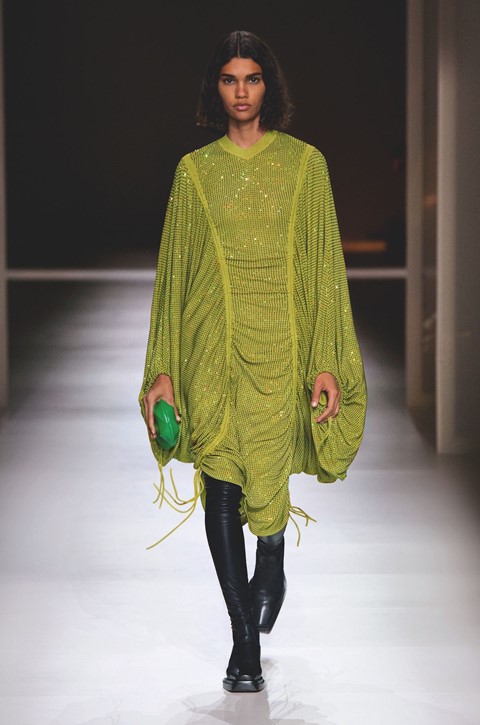
Accessories – still undoubtedly the driving force of the brand – were as covetable as ever: there were blown-up intrecciato-weave tote bags, slung across the shoulder, or narrower-weave intrecciato pouches which, in an echo of the clothing, fell away into a trail of leather tassels. A square-toed Western-cum-Chelsea boot will no doubt prove next season’s staple for Lee’s many devotees; for the braver, chunky ankle boots in Wellington-style plastic, in a variety of colourways. Simple jewellery was dotted throughout: smooth gold and silver hoop earrings, chain necklaces decorated with tiny stars, stacked rings and blocky acetate bangles.
There is little doubt that these composite elements will prove enticing for the already Bottega-clad front row. After all, this is Lee’s particular strength: his runway shows not only sell fantasy, but ignite a more singular desire, for the individual accessories and garments he creates. With this collection, he did so with new ease. It was a statement of intent and ambition: there is plenty more to be seen from the young creative director, who is certainly not going anywhere fast.

